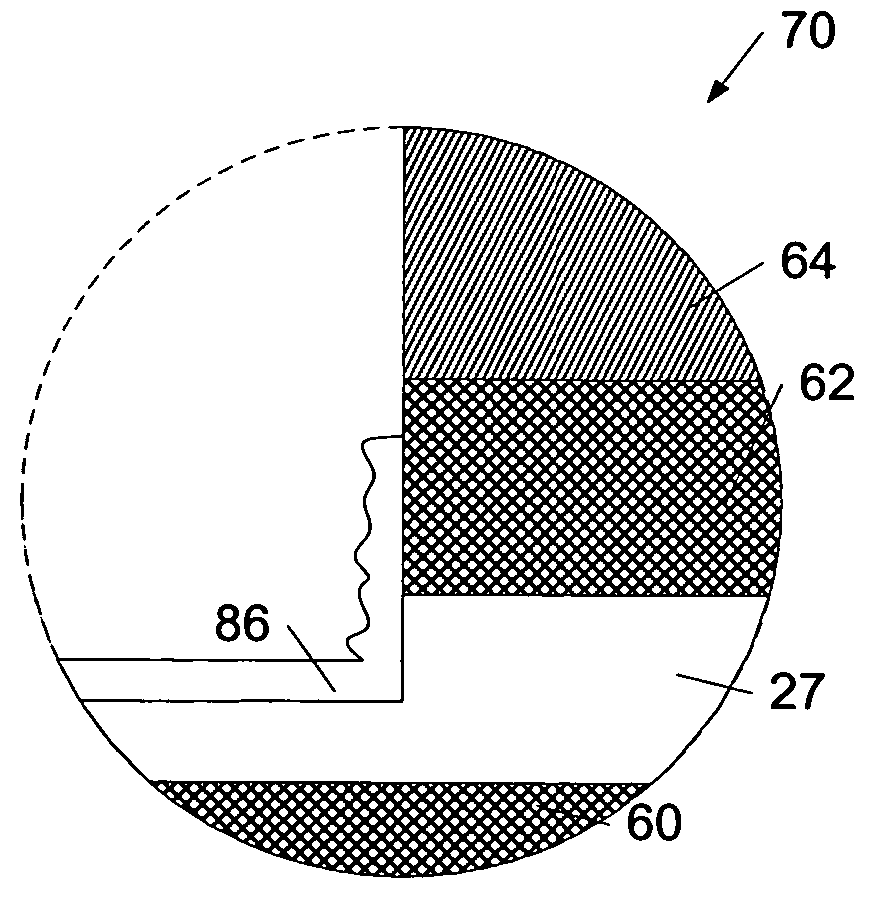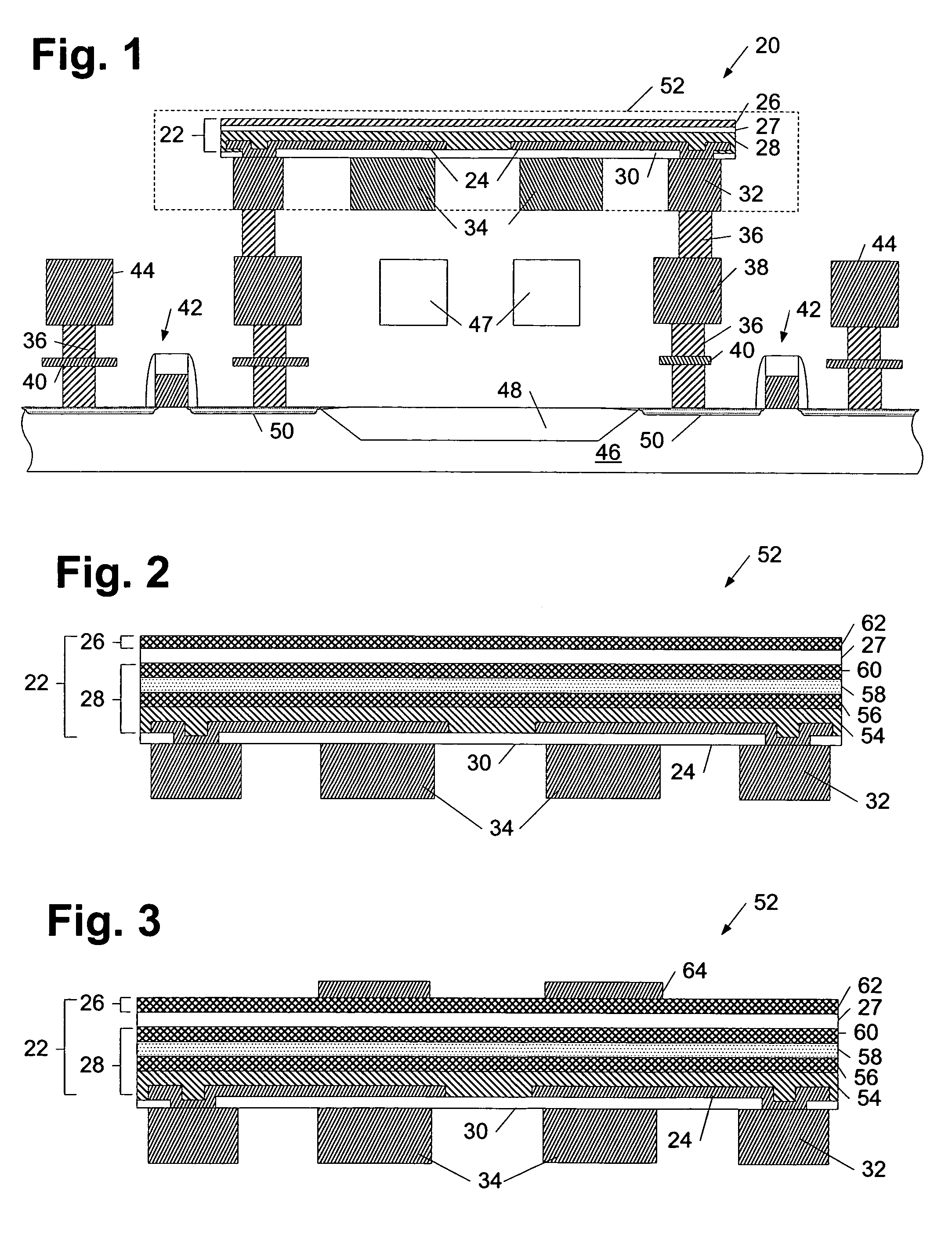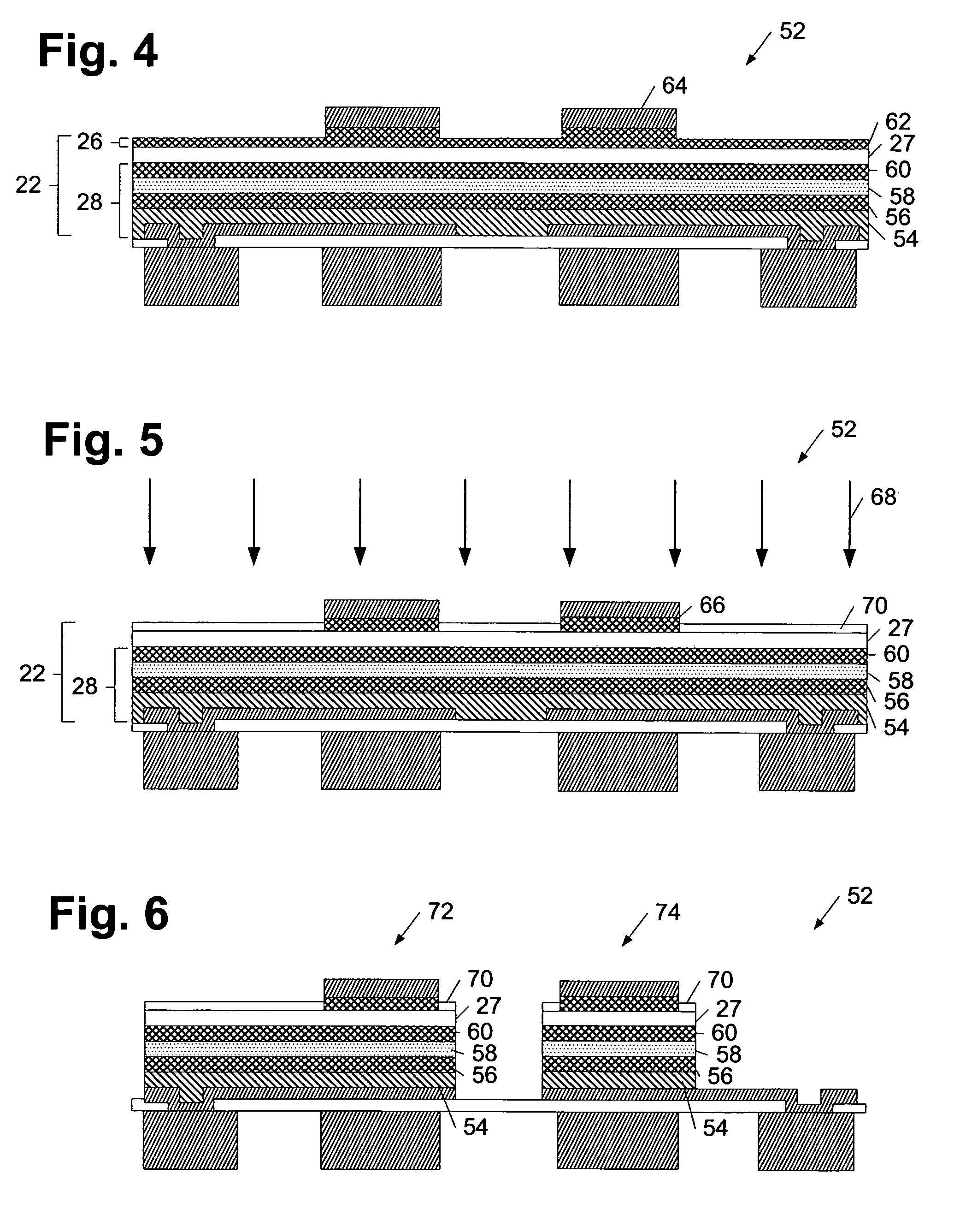Magnetic memory cell junction and method for forming a magnetic memory cell junction
a magnetic memory cell and junction technology, applied in the field of magnetic memory cell junction and the method of etching a semiconductor topography, can solve the problems of reducing the reliability of the memory array, false bit being unintentionally written to one or more cells, and the proportion of the stack of layers to be undercut, so as to achieve high reliability, reduce the likelihood of shortening the tunneling barrier layer of the patterned magnetic cell junction, and tighten the switching field distribution
- Summary
- Abstract
- Description
- Claims
- Application Information
AI Technical Summary
Benefits of technology
Problems solved by technology
Method used
Image
Examples
Embodiment Construction
[0034]Turning to the drawings, exemplary embodiments of methods for patterning a magnetic cell junction are provided. In particular, FIGS. 4–6 illustrate a method in which exposed portions of a stack of layers are etched to a level above a tunneling barrier layer and remaining portions of the layers above the tunneling barrier layer are implanted with dopants such that a lower portion of the magnetic cell junction may be patterned. On the other hand, FIGS. 7a–11 illustrate a method which includes successively repeating the steps of etching and implanting dopants throughout the entirety of the stack of layers such that the entirety of the magnetic cell junction is patterned in a continuous process. An exemplary microelectronic topography which may be used for such methods is described in FIGS. 1–3. In particular, FIG. 1 depicts a partial cross-sectional view of microelectronic topography 20 which includes plurality of layers 22 formed above electrodes 24. As will be described in more...
PUM
 Login to View More
Login to View More Abstract
Description
Claims
Application Information
 Login to View More
Login to View More - R&D
- Intellectual Property
- Life Sciences
- Materials
- Tech Scout
- Unparalleled Data Quality
- Higher Quality Content
- 60% Fewer Hallucinations
Browse by: Latest US Patents, China's latest patents, Technical Efficacy Thesaurus, Application Domain, Technology Topic, Popular Technical Reports.
© 2025 PatSnap. All rights reserved.Legal|Privacy policy|Modern Slavery Act Transparency Statement|Sitemap|About US| Contact US: help@patsnap.com



